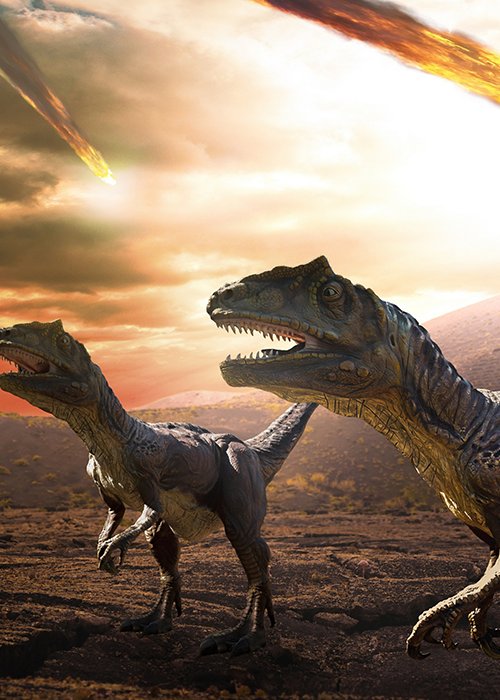The Main Asteroid Belt is between Mars and Jupiter, an enormous ring consisting of millions of large and small rocks that altogether has a tiny mass: only 4% of that of our Moon. Yet the asteroid that changed life on Earth forever by wiping out the dinosaurs came from this cloud of stones 66 million years ago. The asteroid was a rock about ten kilometres in diameter that crashed into our planet at a speed of 43,000 km per hour, forming a huge crater in what is now the Yucatan Peninsula in Mexico. The Chicxulub crater, named after the small town that now stands at its centre, measures 180 kilometres in diameter. The impact of the meteorite raised a tsunami wave more than 1,000 metres high that circled the planet several times and struck the coasts of all the continents.
The Chicxulub asteroid brought 75% of species to extinction, including most of the dinosaurs (except those that later gave rise to birds). The catastrophe was caused by both the impact and the collateral damage. Billions of tonnes of pulverised rock raised sulphur compounds and CO2 into the atmosphere, causing a cooling of the climate and acid rain throughout the Earth.
The soot produced by the vast fires ignited by the glowing rock fragments darkened the sky, amplifying the cooling of the climate already triggered by the rock dust. A long, dark, cold winter followed. How long? According to recent studies, it lasted at least two years, the time needed to extinguish 75% of the living.
Could it happen again? Giant asteroids such as that of Chicxulub strike the Earth once every 250 million years, on average. So the next one will hit in 185 million years. We can rest easy for a while longer. Among the millions of rock fragments that rain down from space every year and burn as they pass through the Earth's atmosphere, none poses a danger; on the contrary, they fill the nights with magic in the form of "shooting stars".
Only the largest rocks touch the ground, and sometimes the larger asteroids break up before crashing into the Earth's surface. It has been considered that perhaps the dinosaurs were doubly unlucky. A new study conducted by the University of Edinburgh has uncovered a crater at the bottom of the Atlantic Ocean near Guinea that is only 8.5 km in diameter, caused by an impact with a 400-metre diameter asteroid, probably the younger brother of Chicxulub. It's possible that the large asteroid lost a piece on its way to Earth. In short, there was no escape for the great reptiles that dominated the Earth until the end of the Cretaceous, an end brought about precisely by that immense planetary catastrophe.
By Andrea Bellati



